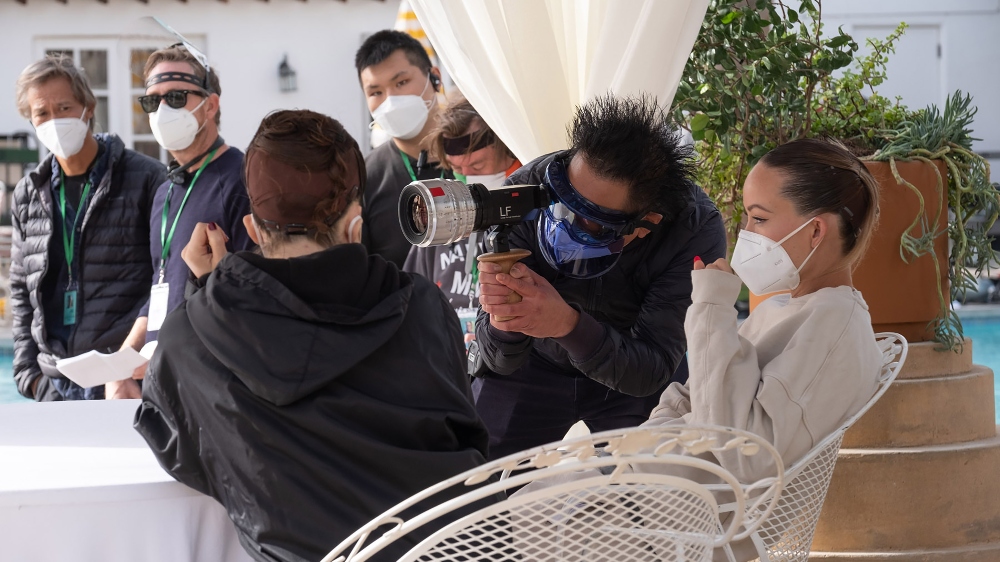
Olivia Wilde made quite the jump from Booksmart to Don’t Worry Darling, but she didn’t navigate those uncharted waters alone, as she wisely surrounded herself with a crew full of industry veterans, including Cinematographer Matthew Libatique.
Don’t Worry Darling tells the story of Alice (Florence Pugh) and Jack (Harry Styles), who are living a happy cookie-cutter life in a pastel-colored neighborhood straight out of the 1950s. All is going well until Alice begins growing curious about the world beyond her little box, after which, trouble ensues.
The film has grossed nearly $90 million worldwide, and not only does it bolster Wilde’s talent as a director, but it represents a fine showcase for Libatique’s cinematography. Between Don’t Worry Darling and Darren Aronofsky‘s upcoming A24 drama The Whale, Libatique is gunning for his third Oscar nomination this year, having previously been nominated for shooting Black Swan and A Star Is Born.
Below the Line recently spoke to LIbatique, who talked about how the 1950s aesthetic inspired the look of the film, what it was like shooting a third-act chase sequence in the desert, and his experience working with actor-directors.
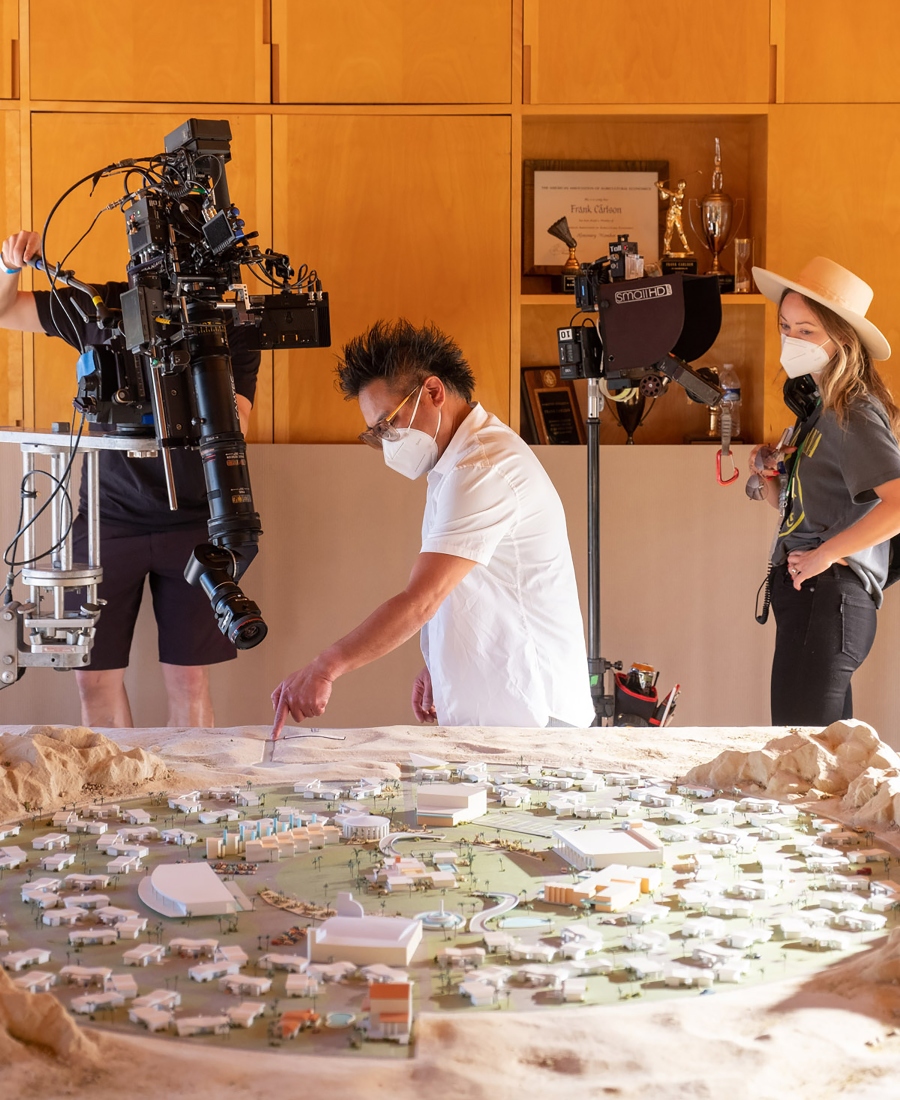
Below the Line: Don’t Worry Darling really shows Olivia Wilde’s progression as a director, so what was your experience making this film, as well as promoting it?
Matthew Libatique: It was just a wonderful film to make. I’ve never done anything like it in that style, you know, sort of 1950s, mid-century modern. Just the beauty in it, the design of the clothing, and the setting was something I’d never done before. It’s always fresh to do stuff you haven’t done before. I’m really thankful for it.
And just the experience of being around Olivia. If you know her, if you get the chance to hang out with her, she’s kind of like this contagious, creative person who brings out the best [in everyone] because she’s always searching for the most creative atmosphere. She sort of inspires everybody to have that. So it’s been wonderful.
Even making the short film with her, I got that vibe, and making Don’t Worry Darling, it’s just like you said — you see her progression.
BTL: How did you first get introduced to her and then get attached to this project? And I was unaware of the short film, what was that?
Libatique: I worked with Olivia as an actor; she did Cowboys & Aliens with Jon Favreau, and she was in that. So we met then and we’ve stayed in touch ever since. And this short film after Booksmart she did with Margaret Qualley [Wake Up], she called me and said, ‘Could you do this? I wanna do this crazy thing in the city,’ and I flew to New York and we shot it in four days. And then we had been talking and she said, ‘My next film is science fiction in the 1950s.’ I thought, ‘She’s coming off of Booksmart and she’s gonna make a science-fiction film?’
Knowing her, I was just proud of her; like, there you go — doing your thing. And then, lo and behold, after the shutdown, everybody was in the house [and[ I was trying to figure out what I was gonna do next, and she called and said, ‘Look, I wanna know if you wanna do this with me,’ because I guess they had shut down because of Covid, and then they were restarting and she was in the market for a DP, so I jumped at the chance.
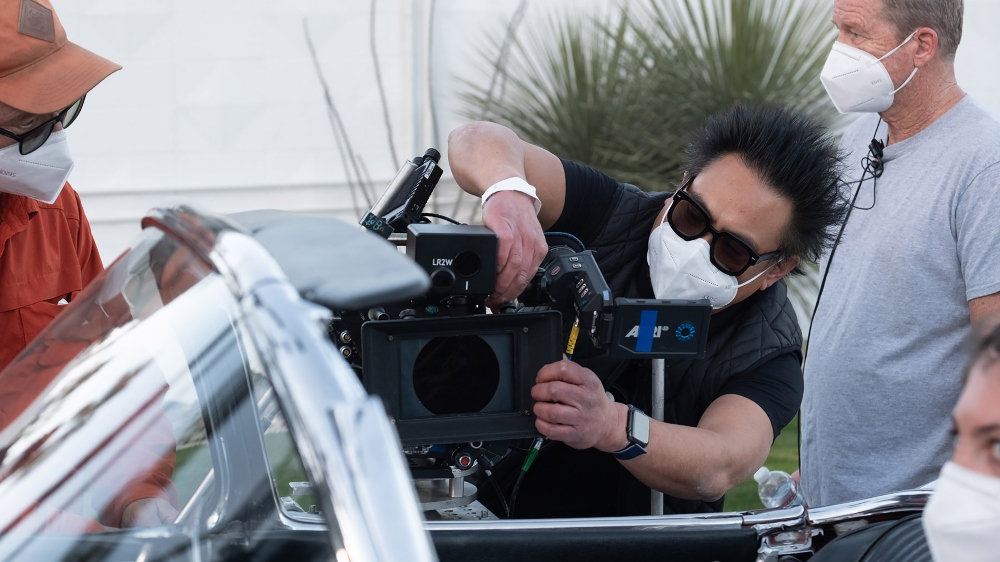
BTL: I know you’ve worked with other actors-turned-directors, including Bradley Cooper on A Star Is Born. Was there anything you noticed about Olivia while working with her as an actress that played into her directorial style years later?
Libatique: I mean, actor-directors are interesting because you just have to give them space to be both. What I mean by that is that you know when somebody’s in the performance, [to] give them that space to be in the performance. But as soon as they’re ready to talk to you about the next shot and how you wanna cover a scene, be ready for that and just be ready to accept whoever you’re dealing with at any given time.
Sometimes it’s the same person, but oftentimes it’s like you’re switching gears and mentally they’re switching gears from performance to directing, and you, as a cinematographer, just have to be open to both. It’s like, ‘Okay, she’s in performance mode — let her do her thing.’ But with Olivia and even Bradley, they’re directing while they’re in the scene. That’s how you know they have that ability, which is why I think they’re both filmmakers [who] understand not just what they’re going through from a character perspective, they both have the ability to understand what everybody else is going through at the same time. I think it’s a quality that they have to have to direct, so it’s interesting and fun to have a front-row seat to that.
BTL: You mentioned that transition of going from a small coming-of-age high school movie — Booksmart — to this big, epic film. What was your mission? And did you have any reference points?
Libatique: I mean, a lot of our references were photography. Axel Crieger is an artist who does a lot of female stories in [their] work. [And] Slim Aarons-type photography that surrounded all these beautiful people over the course of his career, and the famous one at the Kaufman House where you see two ladies sitting by a pool. I mean, that was, like, right out of the film, and the film is right out of a Slim Aarons book.
I looked at a lot of photography, like all the old black-[and]-white photography of the Rat Pack with Sammy Davis Jr., [Frank] Sinatra, Dean Martin — sort of the debaucherous nature of life, you know, and having fun. [Those were] the aspirational references for the movie.
When you watch the first scene and they’re all hanging out playing drinking games, that’s the idea. It’s all about cigarettes and cocktails and drunkenness and music and dancing and laughing and that sets the tone for the whole film. I mean, those three things, I would say, are the chief visual references.
And then there are films like The Truman Show or The Devil’s Advocate, you know, and in the early 1990s and the 1980s, films had sex and they had a thriller aspect to ’em. They were highly stylized, like the Adrian Lyne stuff, and we wanted to be a little bit of a throwback to that.
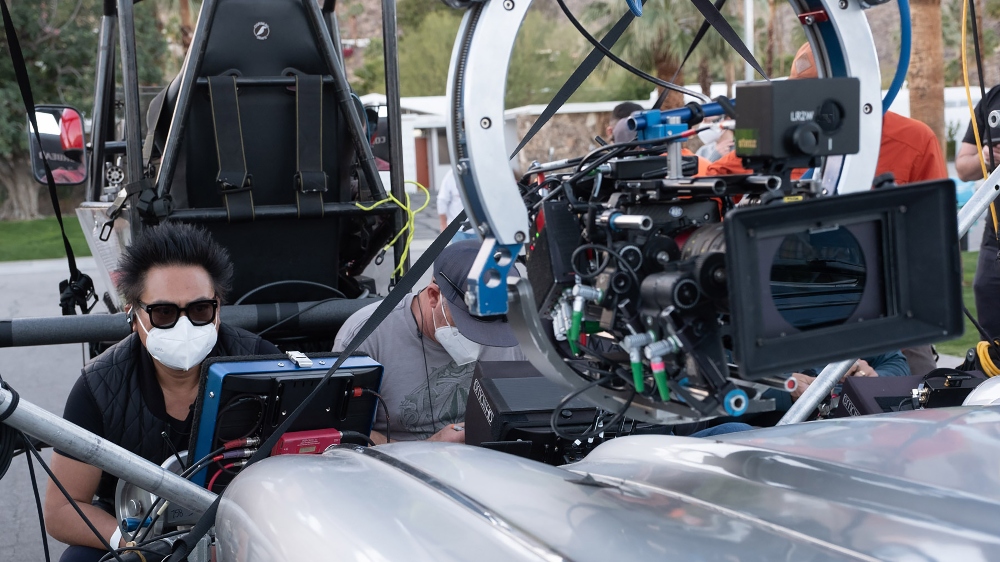
BTL: Just to clarify, you’re talking about the [Al] Pacino and [Keanu] Reeves movie, The Devil’s Advocate?
Libatique: Yeah.
BTL: Wow, now I have to see Don’t Worry Darling again because I never put that together the first time.
Libatique: It wasn’t a literal reference as much as she [Wilde] just liked the vibe of that period in cinema. Movies were definitely a little different back in the ’90s.
BTL: Did you shoot on film or on digital?
Libatique: Digital.
BTL: One of the shots that jumped out to me is that overhead shot when Florence Pugh’s character is making food. Was there a specific reason you went with that POV in those cooking scenes?
Libatique: It wasn’t really a POV. So it was presented to the audience, and if you look at those shots, that shape is mimicked over the course of the film. Like, when we look down at the coffee or round plate, you look down at them doing donuts and you look at her eye, you know what I mean? It’s just a constant theme of the circle shape in the midst of this very 90-degree world.
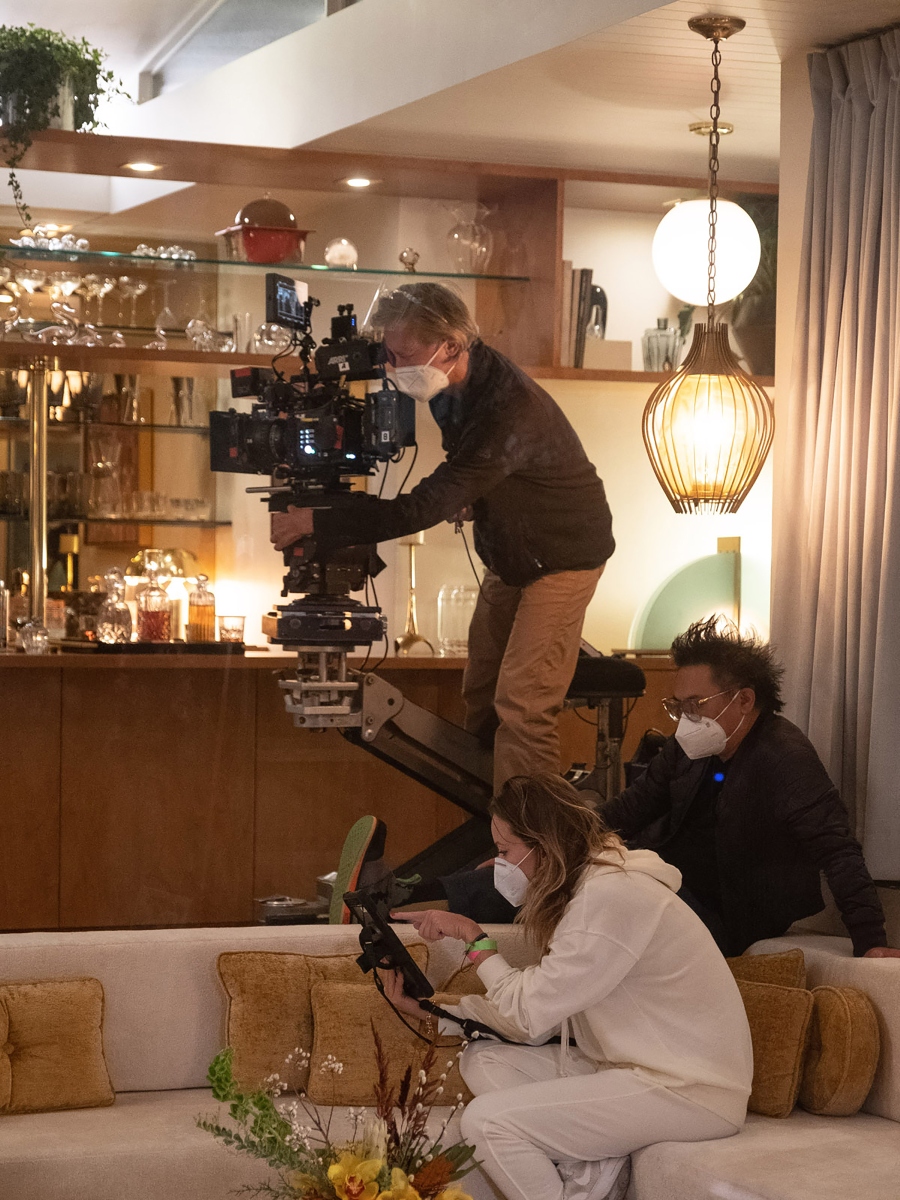
BTL: And that’s also present in the dream-like dance sequences, right?
Libatique: Yeah, the over-shot again. Exactly.
BTL: And those sequences are drastically different from the rest of the film. They kind of pop and look like Black Swan. What did you use as a reference in those sequences?
Libatique: It was really born out of a Busby Berkeley sort of inspiration. What I love about Olivia is her references come from all sorts of places. Like, you really get a feeling for her inspirations, and one of the things that inspired her is sort of the objectification of all these women who are basically the same character, and I think that was what she really gravitated towards — Busby Berkeley and that era where it was just sort of nondescript women repeated 20 times in a circle and then doing the same choreography.
BTL: The third act makes a bit of a jump with the chase sequence in the desert — where did you guys film that sequence, as well as the rest of the movie?
Libatique: Well the film was shot in Los Angeles, on stage in Santa Clarita Valley, and it was shot in Palm Springs, a little bit of downtown LA. But that sequence that you mentioned was shot about 30 minutes outside of Barstow, California and a portion of that sequence was shot in Palm Springs. Then we transitioned to the desert for a lot of the action sequences with cars in the desert outside of Barstow, and that led up to what’s called a “volcano house” that ended up posing as our Victory Headquarters.
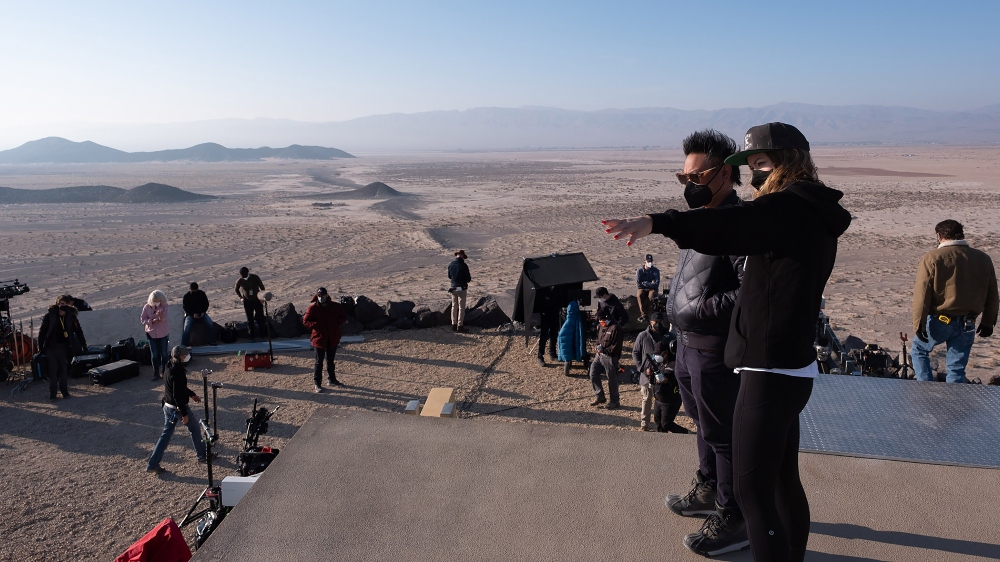
BTL: Were there any scenes that were especially challenging, or scenes where you feel your work really shines?
Libatique: I don’t really gravitate toward one scene as a cinematographer. It’s like, it’s got to all work together and I try not to think about things that way. I’m a firm believer that there might be some shots here and there, maybe scenes here and there, but if it doesn’t work in the grand scheme of things, then it just floats by itself.
I’m really proud of the action sequence just because we didn’t have a second unit, which is typical on a film of a certain size, but we weren’t that size, yet it was the ambition that Olivia had for that sequence. We had jumped through hoops to be able to get the tools we needed to create that sequence and I think it became successful.
It was the climax of the film and the way the film ends really exists on the power, [or] at least the thrill-ride aspect, and the sort of cinematic and fun aspect of the movie really relies so heavily on that action sequence that we worked really hard on it. So I’m proud of that just from a filmmaking standpoint.
BTL: So you really didn’t have a second unit? It just feels like such a big film for that [to be the case].
Libatique: I’m glad it looks big, but it was a moderate-size film [laughs].
BTL: I just find that very interesting. I thought you would’ve had more help with those sequences.
Libatique: Well, believe me, when we started talking about the sequence, I was shocked [laughs]. I was like, ‘Wait, we don’t have anyone to help with this?’ [Because] I don’t usually do that type of thing [action sequences]. I’ve done some action, but I usually do enough action to get the actors into the sequence, and then somebody takes over for all the other stuff, but I’ve learned so much over my career from second-unit directors and cinematographers about what tools to use and I tried to channel all the things I’ve learned before.
Nobody’s gonna care if we had a second unit or not; this just had to be badass.
BTL: Going back to that third-act chase in the desert at the end, I know you and Olivia worked together on Cowboys & Aliens, so did you draw on that experience for that sequence?
Libatique: I mean, yeah, but that was horses, not cars [laughs]. It’s a little different, but certainly, there are aspects of creating action that inform you, that you learn from, but like anything else, every dramatic scene has different asks, you know? And every action scene has different asks. So you carry all the things you’ve learned from before, but Cowboys & Aliens had no direct relation to what we did.
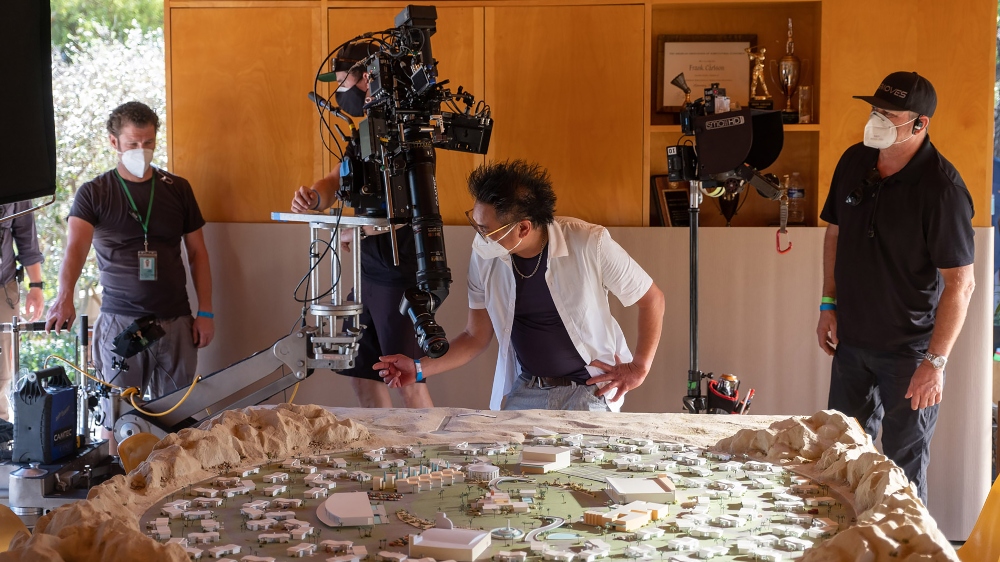
BTL: I don’t know what Olivia is doing next, but if she asks you to collaborate again down the line, would you do another film with her?
Libatique: Oh, 100 percent. I love working with her. As I said, her creativity is contagious and it feels good to work with her.
BTL: A lot has been made in the press about the offscreen drama surrounding this movie, so I’m just curious whether you felt any distractions on set, or if you were able to just show up and do your work like usual.
Libatique: What are you speaking of? Distractions?
BTL: I mean, I know people have talked about some tension behind the scenes, I just didn’t know if you had any perspective on the matter.
Libatique: It was a great experience and anything [like that] anybody talks about baffles me because I didn’t experience anything.
Don’t Worry Darling is now streaming on HBO Max and available to buy or rent on VOD platforms.





